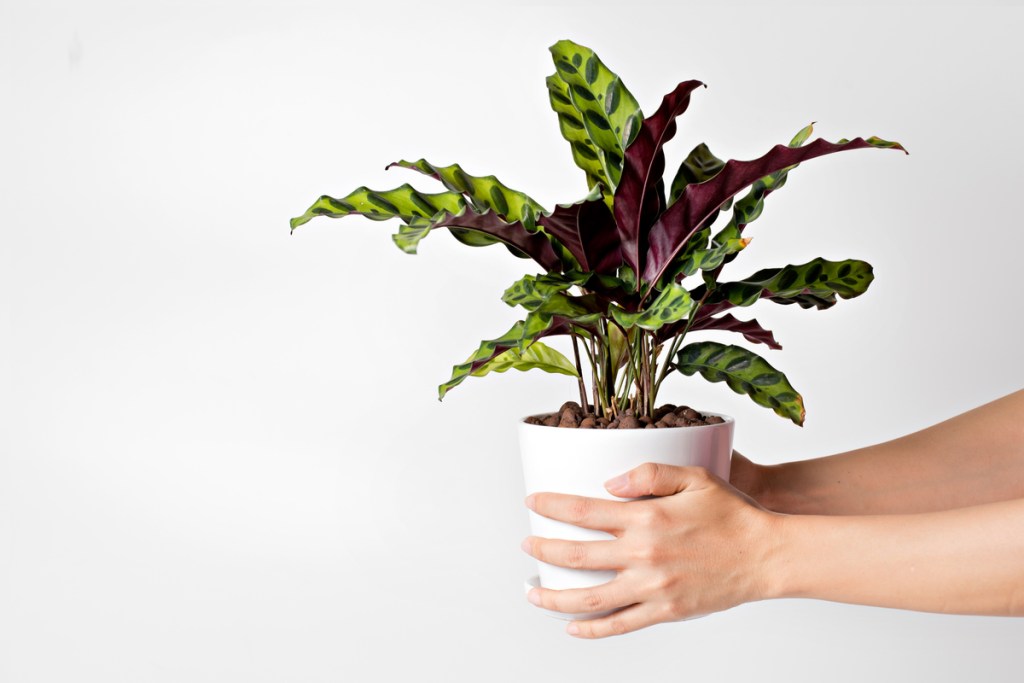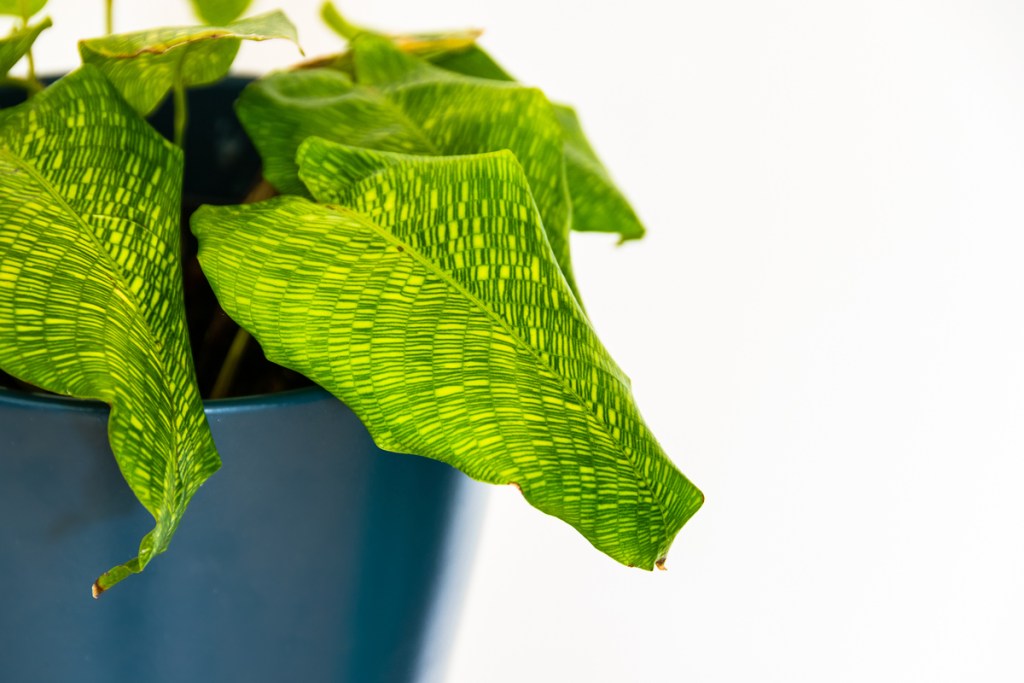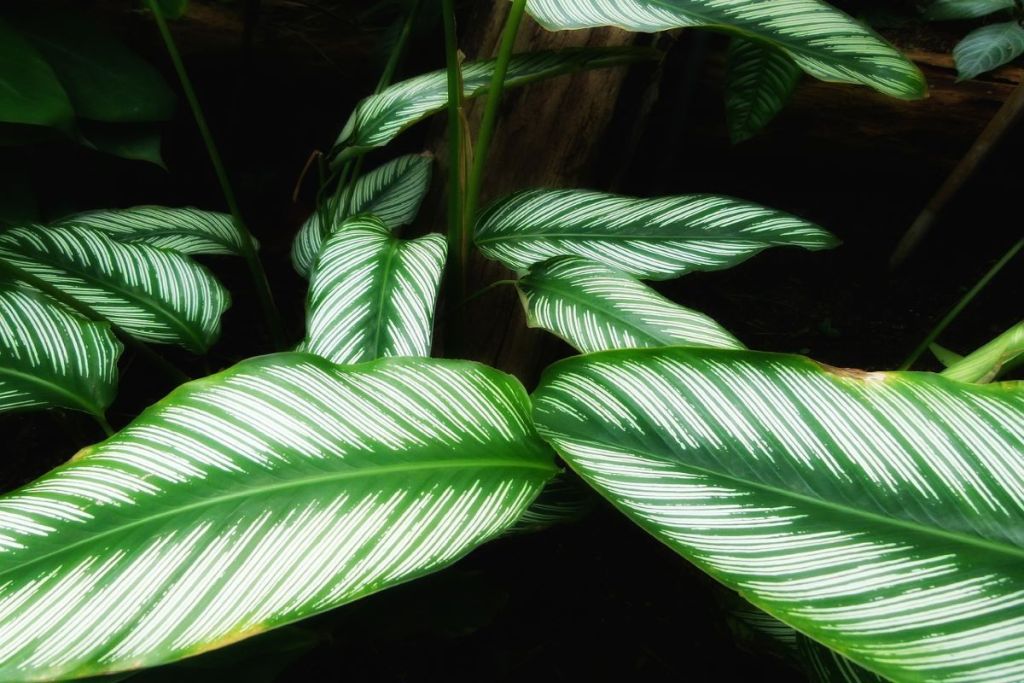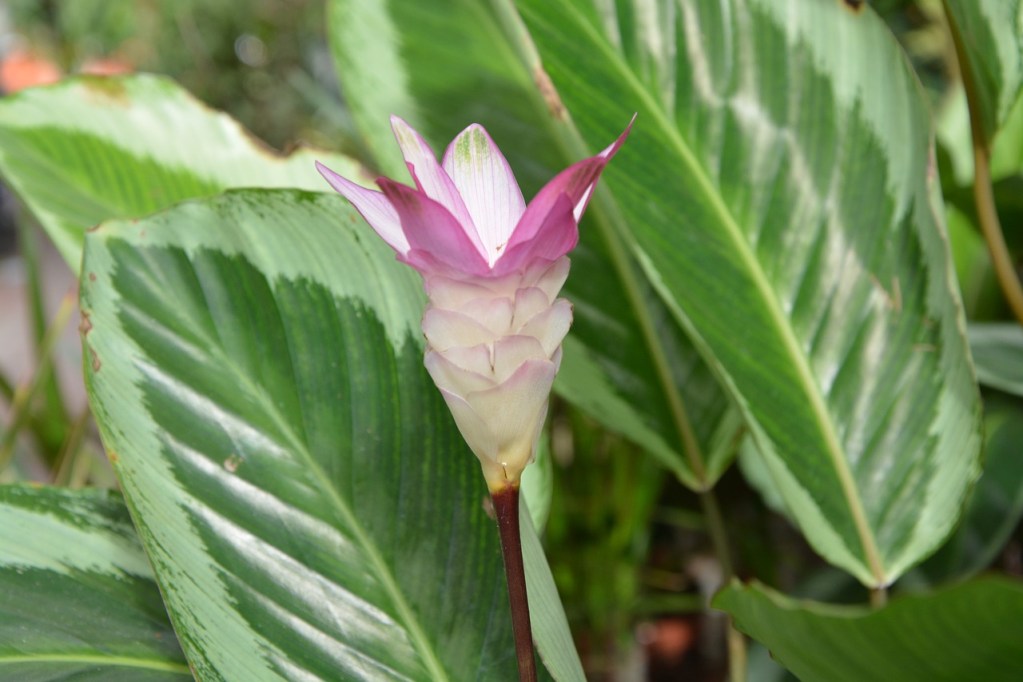A home office is a great place to get work done, but it doesn’t necessarily make your work easier. Creating an environment that helps you focus on work is tricky, but one thing that can help is adding a plant. Bringing just a little bit of the outdoors in can create a calm, relaxing atmosphere that’s more conducive to work. If you’re looking for a fantastic plant to add to your home office, then look no further than a calathea. These stunning plants are an excellent choice, and we’re about to tell you why. Here’s how to care for calathea plants.

What are calathea plants, and why are they good office plants?
Calathea is a genus of plants known for their unique variegated leaves. These plants are also sometimes called prayer plants, because of the way certain varieties of calatheas move their leaves. Calatheas are very similar to the goeppertia; so similar, in fact, that many species of goeppertia were previously misidentified as calathea!
Calathea plants make excellent indoor plants because they’re easy to care for and are tolerant of many conditions, including low light. Additionally, they’re incredibly forgiving. If you don’t spend much time in your office, and sometimes forget to care for any plants you have there, then calathea plants are a great choice for you. They bounce back from neglect with relative ease.
They also stay relatively small, only growing to around 2 feet tall. This makes them a good choice for desks or small tables where larger plants might take up too much room.

Planting a calathea
Plant your calathea in rich, well-draining soil. You can mix compost, coco coir, and/or perlite into your potting soil to give it a boost of nutrients and improve water retention. Make sure to use a pot with drainage holes, so that excess water can escape.
Keep your calathea in a warm and humid environment. If you plan on planting your calathea outdoors, only do so after the last frost of the year. As houseplants, you can start your calathea at any time of the year. However, keep it away from drafty air vents or windows. Adding a humidifier will help your calathea thrive, but you can substitute this for occasional misting and your plant will be fine.
Place your calathea in bright, indirect light. Avoid setting it in direct light for too long, as the leaves can burn. A gauzy curtain can help diffuse the light, which is especially helpful if you plan on setting your calathea right in front of a window. Otherwise, place your calathea a bit back from the window.

Caring for your calathea
Water your calathea every week to every other week, depending on the amount of light it’s getting. Calatheas, like most other plants, need more water when in brighter light and less water in dim light. The top few inches of soil should be dry when you water it, otherwise, you risk overwatering your calathea. These plants bounce back from being underwatered fairly easily, but overwatering is more difficult to correct, so err on the side of caution.
Repot your calathea once a year or every other year, depending on how large you want it to grow. Transplanting your plant into a larger pot encourages it to grow wider. To encourage growth, the next pot you move your calathea to should be roughly 2 inches wider than the last pot. Make sure to use fresh soil when repotting your plant. This refreshes the nutrients in the soil and helps prevent or get rid of any diseases, fungi, or pests that may be in the old soil.
Calathea plants produce flowers, but only rarely indoors. Don’t worry if your calathea isn’t blooming, it just means that the conditions aren’t absolutely perfect. However, a calathea can still survive and thrive, even if the conditions are right for it to flower. The most common reason for a calathea to not flower is a lack of humidity.

Common problems with calathea plants
The most common problems that you may notice with your calathea plant come from improper watering. Luckily, the leaves will tell you exactly what is wrong. If the leaves are drooping or curling, then your calathea is underwatered. Give it a good drink and it will perk back up. If the leaves are turning yellow, especially if the stems or base of the plant are darker than normal, then your calathea is overwatered. Let it dry out in a warm, sunny spot. You may need to repot it in dry soil if the problem is severe.
If the leaves begin to develop dark spots, then there are two possible causes. The first is bacterial leaf spot, a fungal infection caused by wet leaves. Avoid getting water on the leaves when you water your calathea and remove any infected leaves, as the infection can spread to other leaves.
The second possible cause of dark spots is a buildup of minerals in the soil. This typically occurs in calatheas that are watered with tap water. The minerals in tap water that don’t bother us can distress calatheas, so use distilled water instead.
You may see common houseplant pests on your calathea, such as mites, whiteflies, and even mealybugs. You can prevent these by applying neem oil to your plant and dusting it regularly.
Calathea plants are an easy way to create a peaceful work environment in your home office. They’re hardy and forgiving, so don’t worry if you have a brown thumb! Even inexperienced gardeners can keep these plants alive and thriving.
Editors' Recommendations
- Stunning Monstera plants that you should add to your indoor plant collection
- Beyond basil and cilantro, add these unique plants to your indoor herb garden
- 5 easy-care spider plant varieties perfect for any home garden
- Easy hoya plants to add to your indoor plant collection
- Are these common houseplants safe for your cat? Read this guide to find out the scoop




